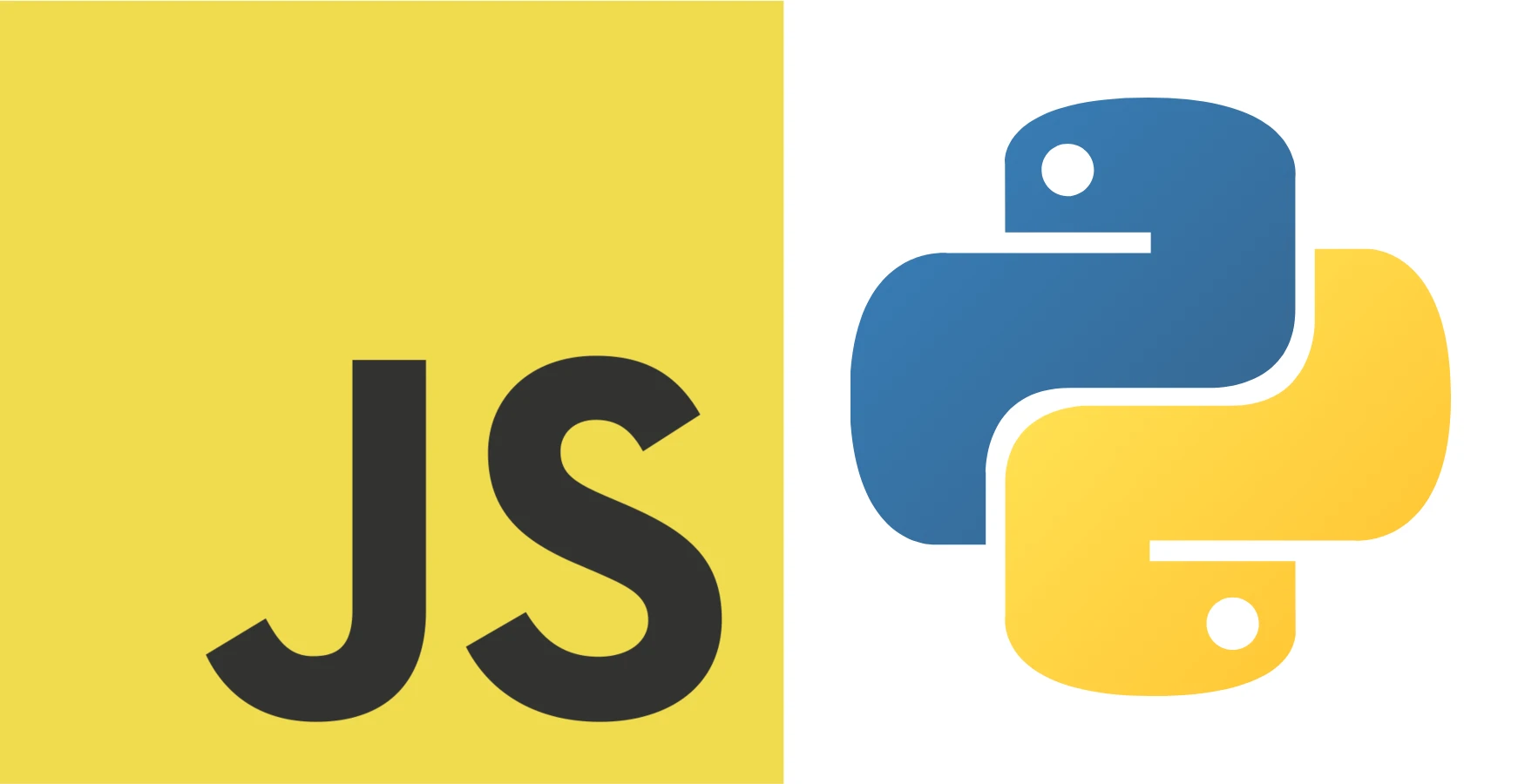Head-to-Head: Python vs. JavaScript
A comprehensive comparison of Python and JavaScript

We get a lot of questions about what programming language is the "best", Python (opens new window) and JavaScript (opens new window) are two popular languages that serve different purposes and have their own unique strengths and weaknesses. Let's compare Python and JavaScript, highlighting their key features and discussing the pros and cons of each language. Whether you're a beginner or an experienced developer, understanding these distinctions can help you make an informed choice when deciding which language to use for your projects.
# Python
Python is a versatile, high-level programming language known for its simplicity and readability.
# Pros of Python:
Easy to Learn and Read: Python's clean syntax and natural language-like structure make it beginner-friendly and highly readable. It reduces the learning curve for new programmers and allows for faster development.
Extensive Standard Library: Python comes bundled with a rich set of libraries and modules, providing solutions for various tasks like web development, data analysis, scientific computing, and more. This vast standard library helps developers save time by leveraging pre-existing functionalities.
Strong Community and Support: Python boasts an active and supportive community. There are numerous resources, documentation, tutorials, and libraries available, making it easier to find help and share knowledge.
Versatility and Integration: Python is widely used in different domains, including web development, data science, machine learning, and automation. It integrates well with other languages, allowing developers to combine Python with C/C++, Java, or JavaScript.
# Cons of Python
Performance: Python is an interpreted language, which means it may not perform as well as languages that are compiled, such as C or C++. While it is generally fast enough for most applications, highly performance-critical tasks may require optimization or the use of other languages.
Global Interpreter Lock (GIL): Python's GIL allows only one thread to execute Python bytecode at a time, limiting the efficiency of multi-threaded applications. This can impact performance in certain scenarios that heavily rely on parallel processing.
# JavaScript
JavaScript is a versatile scripting language primarily used for web development.
# Pros of JavaScript
Ubiquitous: JavaScript is supported by all major web browsers, making it the language of choice for client-side scripting on the web. Its widespread usage ensures compatibility and availability on various platforms.
Front-end and Back-end Development: JavaScript is not limited to front-end web development. With the advent of technologies like Node.js, developers can use JavaScript for server-side programming as well. This enables full-stack JavaScript development, allowing for a unified codebase.
Asynchronous Programming: JavaScript's event-driven, non-blocking nature enables asynchronous programming. This allows for efficient handling of tasks such as network requests, ensuring smooth user experiences and better performance.
Vast Ecosystem and Frameworks: JavaScript has a vibrant and extensive ecosystem with numerous libraries, frameworks, and tools. Popular frameworks like React, Angular, and Vue.js provide robust solutions for building dynamic web applications.
# Cons of JavaScript
Inconsistencies Among Browsers: JavaScript implementations can vary slightly between different browsers, leading to cross-browser compatibility issues. Developers must test and account for these discrepancies when developing web applications.
Complexities in Scope and Context: JavaScript has some intricacies in its scoping rules and the concept of "this" that can confuse beginners and even experienced developers. It requires careful attention to prevent unintended behavior and bugs.
Security Risks: Being a client-side language, JavaScript can be susceptible to security vulnerabilities if not handled correctly. Developers must be aware of potential risks like cross-site scripting (XSS) and implement proper security measures.
# Wrap-up
Python and JavaScript are both powerful and widely used programming languages, each with its own set of strengths and weaknesses. Python's simplicity, readability, and extensive standard library make it an excellent choice for beginners and developers working on a wide range of projects. On the other hand, JavaScript's ubiquity in web development, asynchronous programming capabilities, and expansive ecosystem make it indispensable for creating dynamic and interactive web applications.
Ultimately, the choice between Python and JavaScript depends on the specific requirements of your project. If you prioritize ease of learning, versatility, and a supportive community, Python may be the ideal choice. However, if your focus is on web development, cross-platform compatibility, and interactive user experiences, JavaScript is the go-to language.
Both languages have their merits, and many developers find themselves working with both at different times. As you gain experience and delve deeper into programming, exploring and mastering both Python and JavaScript will expand your skillset and open up a wider range of opportunities in the exciting world of software development.
